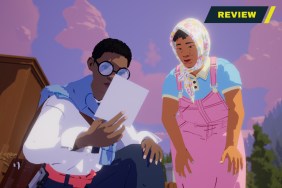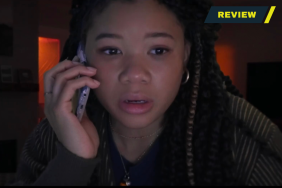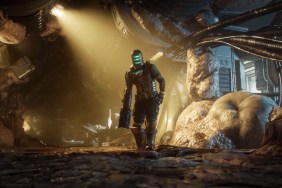
5 out of 10
Cast:
Travis Fimmel as Sir Anduin Lothar
Paula Patton as Garona Halforcen
Ben Foster as Medivh
Dominic Cooper as King Llane Wrynn
Toby Kebbell as Durotan
Ben Schnetzer as Khadgar
Robert Kazinsky as Orgrim Doomhammer
Daniel Wu as Gul’dan
Ruth Negga as Lady Taria Wrynn
Anna Galvin as Draka
Clancy Brown as Blackhand
Terry Notary as Grommash Hellscream
Michael Adamthwaite as King Magni Bronzebeard
Callum Keith Rennie as Moroes
Burkely Duffield as Callan, the son of Anduin Lothar.
Directed by Duncan Jones
Warcraft Review:
Warcraft should be good, but isn’t. Director and co-writer Duncan Jones (Moon, Source Code) makes many good choices about character and design and is frequently more successful than he has any right to be. Unfortunately, the film never gets over the bad choices it also makes. There are two movies inside Warcraft battling for space, much as the orcs and humans do when a marauding band of the green monsters invades the peaceful world of Azeroth through the aid of a mysterious, destructive magic known as Fel. One of these films is an interesting and affecting character-based action film about the struggles of a good leader forced to make hard decisions for the good of his family. The other is an empty, cliché-ridden waste of time filled with more exposition than people and failed dramatic choices. Two guesses which side wins in the end.
Warcraft spends a lot of its time trying to fill the audience with a feeling of abiding pathos (if not outright dread) but mostly what it manages is frustration. It makes a lot of smart decisions about character, particularly the orcs. Jones and his co-writer Charles Leavitt (Blood Diamond) (adapting several of Chris Metzen’s storylines from the game) have good ideas about what makes a movie work. They understand that, while big moments make an adventure film, small moments make an actual film.
All of Warcraft’s best moments are small moments: an orc husband and wife talking before bed, a hero stopping for breath while walking up a wizard’s endless stair, etc. This benefits the orcs more than anyone else, giving Kebbel’s Durotan an understandable and relatable inner life. It’s in Durotan that all of Jones’ best ideas about Warcraft find fruit; he’s a conflicted multi-dimensional character filled with genuine pathos and drama and never one note. As dour as he can be, he’s leavened by the warmth he feels for his friends and family, giving him genuine moments of humor, and Kebbel goes all in on the film’s best performance. Jones grasps the great secret of the effects-based character: making them act like real people is what will make them believable, no matter the technical level of the production.
These decisions make some odder choices, particularly about the design, work better than they should because they are connected to interesting people. Warcraft intentionally apes the design of the video game it is based off of, including the bright colors and strange proportions of its CGI characters. It sticks to that look so thoroughly, and makes such effort to make them act real even if they don’t look real, that suspension of disbelief is not a problem. Production designer Gavin Boquet (the Star Wars prequels), with the aid of the visual effects artists at Industrial Light & Magic and Richard Taylor’s prosthetic and armor crafters at the Weta Workshop, have committed to making a film which looks as much like the game as possible. That choice is support by Simon Duggan’s lenswork which fills the screen with bright greens and golds aping the source material’s palette. Frequently in the early going it all works together to meet what seems to be Jones’ ultimate goal: bringing Warcraft the game to real, moving life.
Unfortunately that success only lasts as so long.
Taking a brief glance at the film you’d expect it to be like others of its kind, filled with fake people it’s impossible to suspend disbelief in and you’d be right, except the unbelievable people in Warcraft are not the CGI orcs. As interesting the orcs often are, the humans simply aren’t. Much of that is because the human portion of the story gets laden with the bulk of the exposition, turning the characters into story explainers instead of people. (And it handles exposition in very strange ways, over-explaining some unimportant elements and under explaining other important ones – particularly the nature of Fel).
To make up the difference, Jones and Leavitt frequently turn to character shorthand (read cliché). Lothar’s (Fimmel) primary, non-fighting characteristic is his relationship with his teenage son who has just become a knight himself. It’s a relationship given the least amount of screen time possible and whose ultimate conclusion is telegraphed so thoroughly it works exactly as well as such a thing sounds like it will. And that’s the most successful character work outside of the orcs.
The rest of the heroes’ screen time is focused on either sorcerer in training Khadgar (Schnetzer), who is a terrible character terribly performed, or Patton’s Garona. Jones and Patton obviously want to invest Garona with a lot of pathos, and build the film’s conclusion around her for that reason, but she’s so constantly dour (with none of the flashes of humor of Durotan or even Lothar) it never sticks. In that sense she’s a living, breathing example of why Warcraft fails; on paper everything about her story works but in practice it’s impossible to relate to.
For much of its running time, it seems as if the good ideas will triumph, but the inertia of the bad ideas proves too much to overcome, the worst being it’s all-in service of a story which goes nowhere. Jones’ ultimate goal is to set up the conflict of the game, the world of orcs versus humans, and leave it, which means most of the major antagonistic relationships get no payoff or only cursory ones. Worse, he becomes outright manipulative at the end in order to force the story in that direction when it was clearly not heading that way which requires characters to make baffling decisions and react in frankly unbelievable ways.
An unsatisfying ending can paradoxically be deeply satisfying, leaving an audience wanting to know what happens next (which is clearly what Jones wants). But it has to be earned; it requires a feeling of both surprise and inevitability and most of the time Warcraft can only manage one or the other. That leaves the audience with the worst feeling any piece of art can manage: apathy.
Warcraft
-
Universal Pictures Home Entertainment - Warcraft

From Universal Pictures Home Entertainment and Legendary Pictures: Warcraft (PRNewsFoto/Universal Pictures Home...) -
Warcraft

-
Warcraft

-
Warcraft

-
Warcraft

-
Warcraft

-
Warcraft

-
Warcraft

-
Warcraft

-
Warcraft

-
Warcraft0001

-
Warcraft

-
Warcraft

-
Warcraft

-
Warcraft

-
Warcraft

-
Warcraft

-
Warcraft

-
Warcraft

-
Warcraft

-
Warcraft

-
Warcraft

-
Warcraft

-
Warcraft

-
Warcraft

-
Warcraft

-
Warcraft

-
Warcraft

-
Warcraft

-
Warcraft

-
Warcraft

-
Warcraft

-
Warcraft

-
Warcraft

-
Warcraft

-
Warcraft

-
Warcraft

-
Warcraft

-
Warcraft

-
Warcraft

-
Warcraft Doomhammer Pendant

-
Warcraft

-
Warcraft

-
Warcraft

-
Warcraft

-
Warcraft Lothar Character Poster

-
Warcraft Durotan Character Poster

-
Warcraft

-
Warcraft Orgrim

-
Warcraft Orgrim

-
Warcraft

-
Warcraft

-
Warcraft

-
Warcraft

-
Warcraft

-
Warcraft

-
Warcraft

-
Warcraft

-
Ironforge

-
Dalaran

-
Draenor

-
Stormwind

-
Warcraft Orgrim 1:6 scale

-
Warcraft Alliance Lion Ring

-
Warcraft

-
Warcraft

-
Warcraft

-
Warcraft

-
Warcraft

-
Warcraft

-
Warcraft

-
Warcraft

-
Warcraft

-
Warcraft 1/6th scale King Llane shield and sword

-
Warcraft

-
Warcraft

-
Warcraft

-
Warcraft

-
Warcraft










